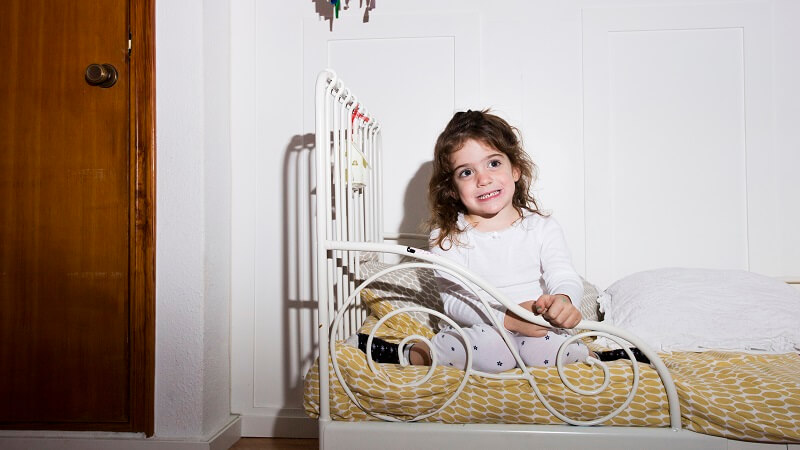As parents, ensuring our children’s safety is paramount, especially during sleep. Guard rails play a crucial role in preventing falls and providing peace of mind. The ideal bed rail should rise at least five inches above the mattress surface to effectively keep kids secure throughout the night.
Selecting the right guard rail involves considering factors such as height, length, and installation method. Some rails can be easily attached and removed, while others offer more permanent solutions. It’s essential to choose a rail that fits your child’s bed size and matches their sleeping habits.
With Black Friday approaching, many retailers offer bed sales, including safety accessories like guard rails. This presents an opportune time for parents to invest in quality sleep safety products for their children at discounted prices. Take advantage of bed sales on Black Friday to find discounted safety accessories.
Key Takeaways
- Guard rails should extend at least 5 inches above the mattress for optimal safety
- Consider bed size, child’s sleeping habits, and installation preferences when choosing rails
Essentials of Bed Safety for Children
Ensuring a safe sleeping environment is crucial for children transitioning from cribs to beds. Proper bed rails, appropriate mattress selection, and smooth transitions play key roles in maintaining safety and comfort.
Understanding Bed Rails and Their Importance
Bed rails serve as essential safety barriers, preventing falls during sleep. They should rise at least 5 inches above the mattress surface for optimal protection. Some models, like the Regalo Swing Down Bed Rail Guard, offer easy access for parents while maintaining security.
When selecting bed rails, consider the bed size and your child’s age. Rails designed for traditional twin beds, such as the TotCraft Safety Guardrail (59″ W x 19.5″ H), provide a good balance of coverage and accessibility.
Proper installation is critical. Always follow manufacturer guidelines and ensure rails are securely attached to prevent gaps or detachment during use.
Choosing the Right Toddler Bed for Safety and Comfort
Selecting an appropriate toddler bed is crucial for safety and comfort. Look for beds with built-in safety features like low heights and rounded edges to minimize injury risks.
Consider mattress size and compatibility with safety rails. A snug fit between the mattress and bed frame reduces the risk of entrapment.
Some key factors to consider:
- Sturdy construction
- Non-toxic materials and finishes
- Compliance with safety standards (CPSC guidelines)
- Weight capacity suitable for your child’s size
Opt for beds with additional safety features like non-slip feet or anchor systems for added stability.
Transitioning from Crib to Toddler Bed Smoothly and Securely
A smooth transition from crib to toddler bed helps ensure your child’s safety and comfort. Start by introducing the new bed gradually, allowing your child to nap in it before making the full switch.
Use familiar bedding and comfort items to create a sense of security. Position the new bed in the same location as the crib if possible.
Safety measures for the transition:
- Install bed rails on both sides of the bed
- Place soft rugs or cushions on the floor beside the bed
- Use a night light to help prevent disorientation
Maintain consistent bedtime routines to help your child feel secure in their new sleeping environment. Be patient and supportive throughout the process, as some children may take time to adjust.
Selecting and Installing the Ideal Bed Rails
Choosing the right bed rails is crucial for your child’s safety and comfort. The best options combine security, ease of use, and durability to give parents peace of mind.
Key Features of the Best Bed Rails for Kids
When selecting bed rails, prioritize height and length. Rails should extend at least 5 inches above the mattress for optimal protection. Extra-long rails offer full-length coverage, ideal for active sleepers.
Look for sturdy construction with reinforced anchor points. Steel frames provide excellent stability. Mesh or fabric panels between rails allow airflow and visibility while preventing limb entrapment.
Consider adjustable rails that grow with your child. Some models offer height settings to accommodate different mattress thicknesses.
For travel, portable bed rails with compact folding designs are essential. These lightweight options typically feature quick assembly mechanisms for convenience on the go.
The Convenience of Easy Installation and Fold-Down Designs
Easy installation is a key factor in bed rail selection. Many modern designs use tool-free assembly methods, allowing quick setup without hassle.
Strap systems secure rails to the bed frame or box spring, ensuring a snug fit. Some models use non-slip grips for added stability on smooth surfaces.
Fold-down rails offer the best of both worlds. They provide security when up and easy access when lowered. This feature is particularly useful for bed-making and nighttime comfort.
Look for smooth, quiet folding mechanisms that won’t disturb sleeping children. One-handed operation is ideal for parents carrying infants or other items.
Finding Durable and Easy-to-Clean Options for Long-Lasting Use
Durability is essential for bed rails that will see daily use. High-quality materials like reinforced plastics or powder-coated metals resist wear and tear.
Fabric components should be machine washable for easy cleaning. Removable, zippered covers allow for quick changes in case of spills or accidents.
Opt for smooth surfaces and rounded edges to prevent injury and simplify wiping down. Avoid designs with small crevices that can trap dirt or liquids.
Water-resistant or waterproof materials offer additional protection against bedwetting incidents. Some rails feature antimicrobial treatments to inhibit bacterial growth, promoting a cleaner sleep environment.
Conclusion
Child safety is paramount when it comes to sleeping arrangements. Guard rails and bed safety devices play a crucial role in preventing falls and accidents. Proper installation, regular inspections, and age-appropriate choices are key factors in ensuring effectiveness. By implementing these safety measures, parents can provide a secure sleep environment for their children and enjoy peace of mind.
